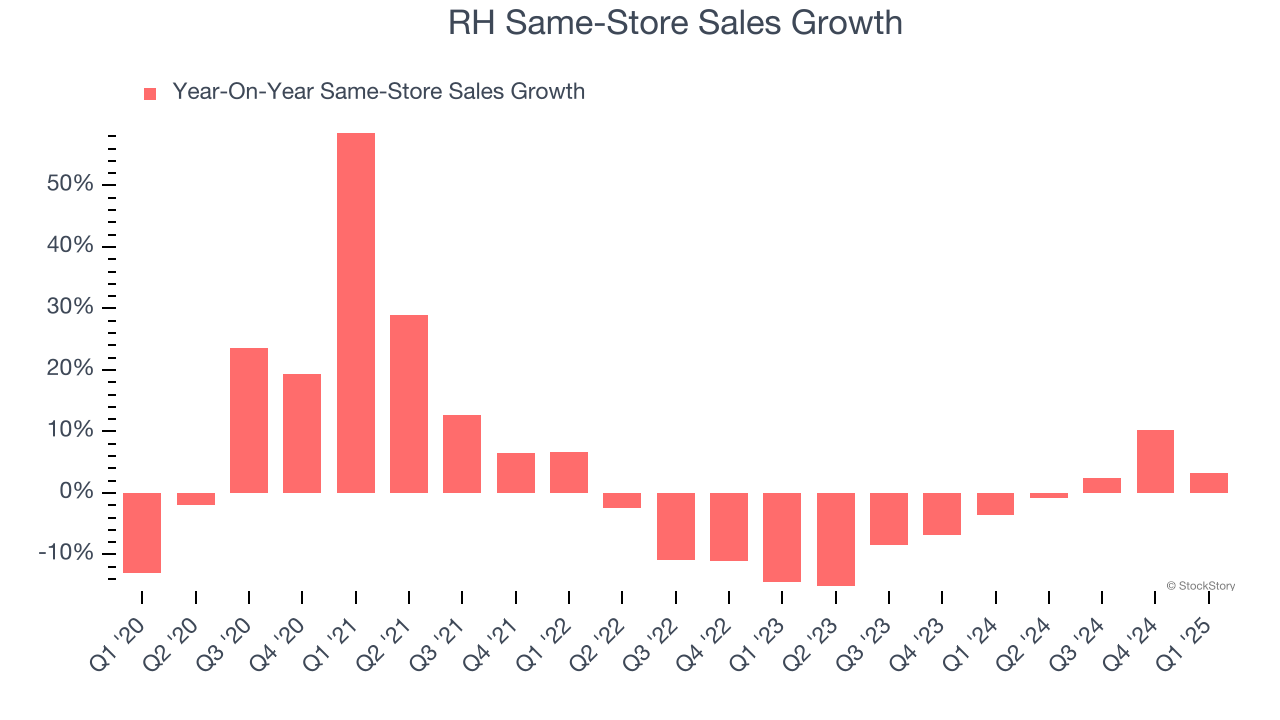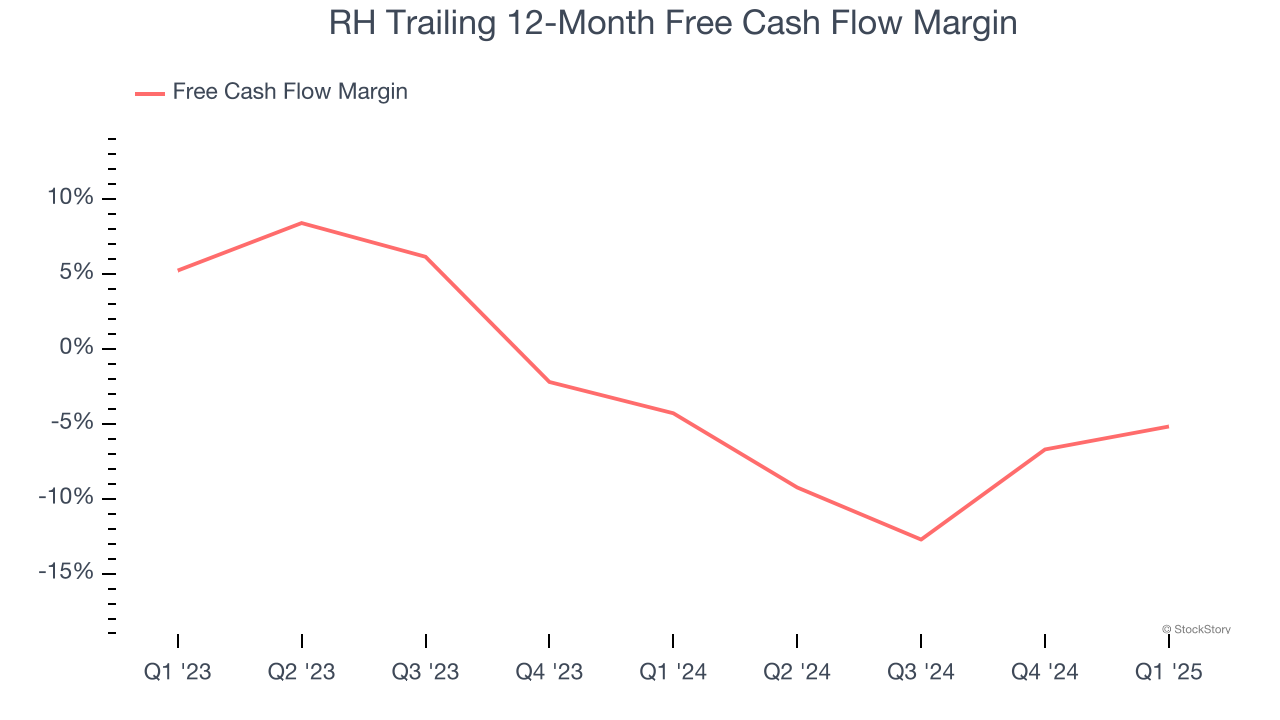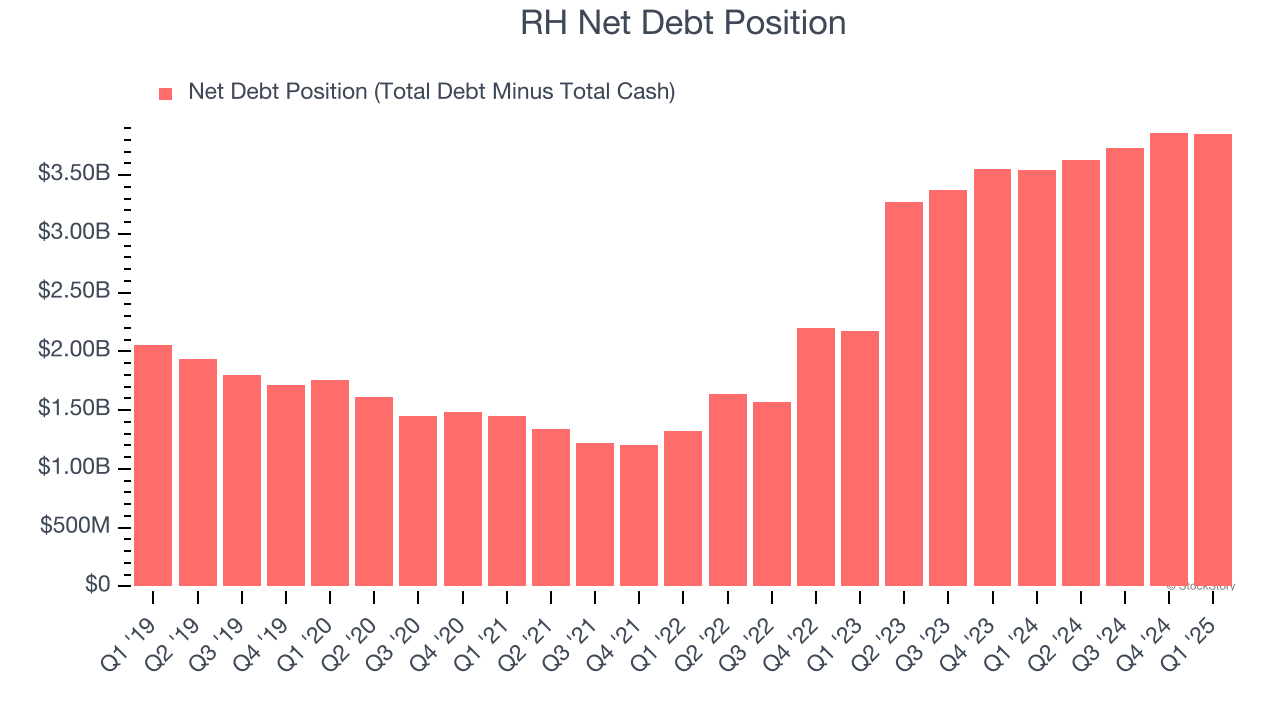
Shareholders of RH would probably like to forget the past six months even happened. The stock dropped 48.7% and now trades at $207.04. This may have investors wondering how to approach the situation.
Is there a buying opportunity in RH, or does it present a risk to your portfolio? See what our analysts have to say in our full research report, it’s free.
Why Is RH Not Exciting?
Despite the more favorable entry price, we're cautious about RH. Here are three reasons why RH doesn't excite us and a stock we'd rather own.
1. Shrinking Same-Store Sales Indicate Waning Demand
Same-store sales is a key performance indicator used to measure organic growth at brick-and-mortar shops for at least a year.
RH’s demand has been shrinking over the last two years as its same-store sales have averaged 2.4% annual declines.

2. Cash Burn Ignites Concerns
If you’ve followed StockStory for a while, you know we emphasize free cash flow. Why, you ask? We believe that in the end, cash is king, and you can’t use accounting profits to pay the bills.
While RH posted positive free cash flow this quarter, the broader story hasn’t been so clean. Over the last two years, RH’s capital-intensive business model and investments in new physical locations have consumed many resources. Its free cash flow margin averaged negative 4.8%, meaning it lit $4.76 of cash on fire for every $100 in revenue. This is a stark contrast from its operating margin, and its investments in working capital/capital expenditures are the primary culprit.

3. Short Cash Runway Exposes Shareholders to Potential Dilution
As long-term investors, the risk we care about most is the permanent loss of capital, which can happen when a company goes bankrupt or raises money from a disadvantaged position. This is separate from short-term stock price volatility, something we are much less bothered by.
RH burned through $169.5 million of cash over the last year, and its $3.90 billion of debt exceeds the $46.08 million of cash on its balance sheet. This is a deal breaker for us because indebted loss-making companies spell trouble.

Unless the RH’s fundamentals change quickly, it might find itself in a position where it must raise capital from investors to continue operating. Whether that would be favorable is unclear because dilution is a headwind for shareholder returns.
We remain cautious of RH until it generates consistent free cash flow or any of its announced financing plans materialize on its balance sheet.
Final Judgment
RH isn’t a terrible business, but it isn’t one of our picks. After the recent drawdown, the stock trades at 18.5× forward P/E (or $207.04 per share). Investors with a higher risk tolerance might like the company, but we think the potential downside is too great. We're pretty confident there are more exciting stocks to buy at the moment. We’d recommend looking at our favorite semiconductor picks and shovels play.
High-Quality Stocks for All Market Conditions
The market surged in 2024 and reached record highs after Donald Trump’s presidential victory in November, but questions about new economic policies are adding much uncertainty for 2025.
While the crowd speculates what might happen next, we’re homing in on the companies that can succeed regardless of the political or macroeconomic environment. Put yourself in the driver’s seat and build a durable portfolio by checking out our Top 9 Market-Beating Stocks. This is a curated list of our High Quality stocks that have generated a market-beating return of 183% over the last five years (as of March 31st 2025).
Stocks that made our list in 2020 include now familiar names such as Nvidia (+1,545% between March 2020 and March 2025) as well as under-the-radar businesses like the once-micro-cap company Kadant (+351% five-year return). Find your next big winner with StockStory today.
